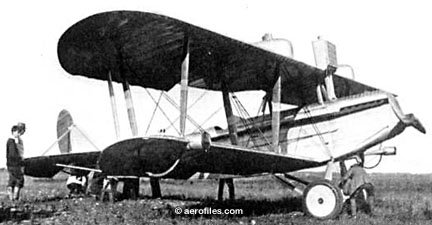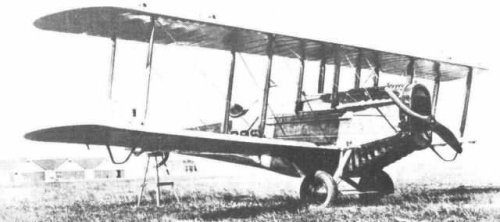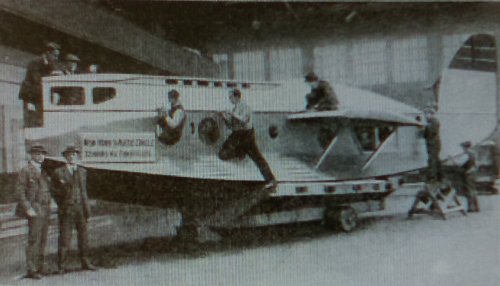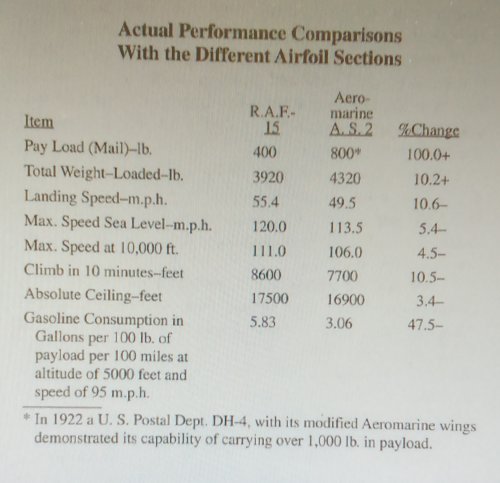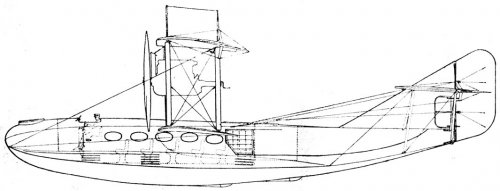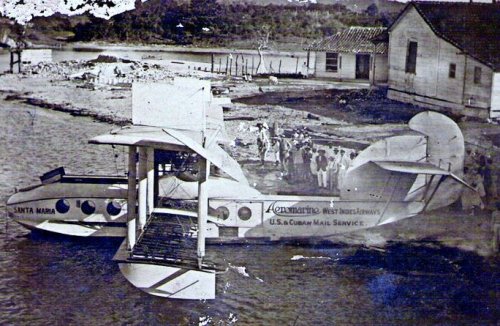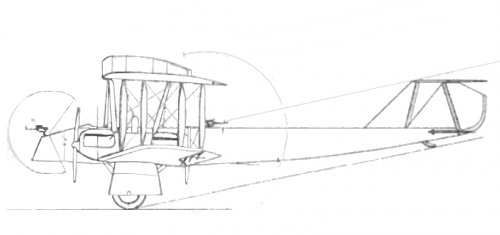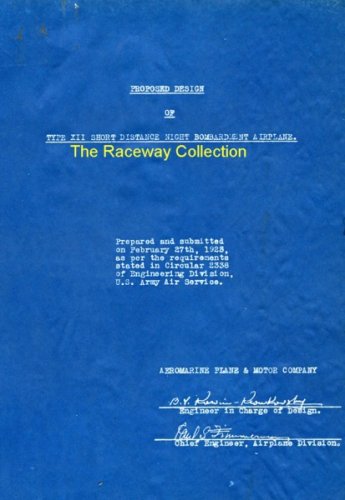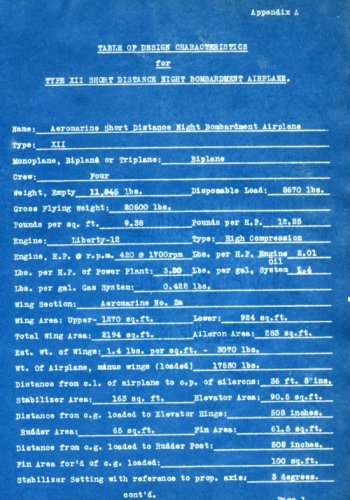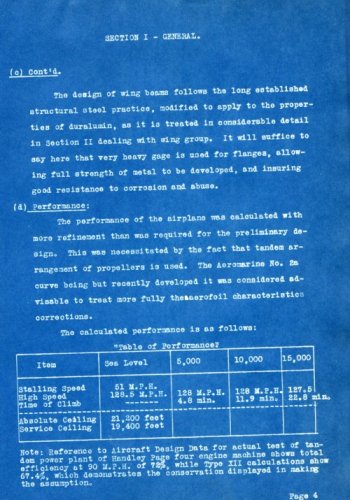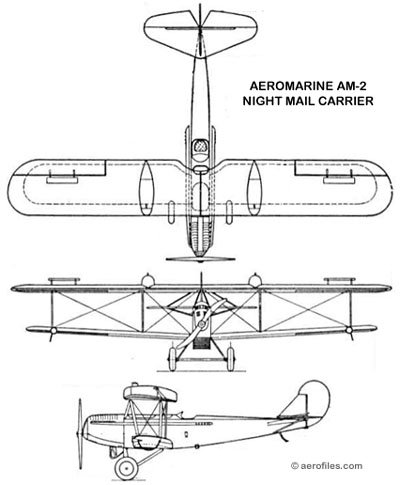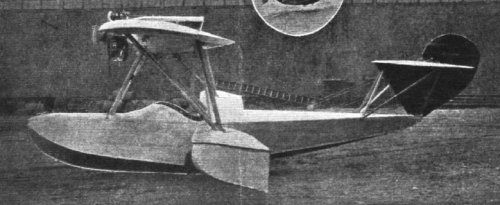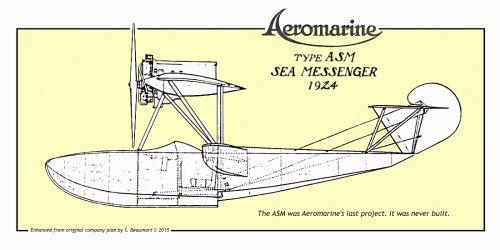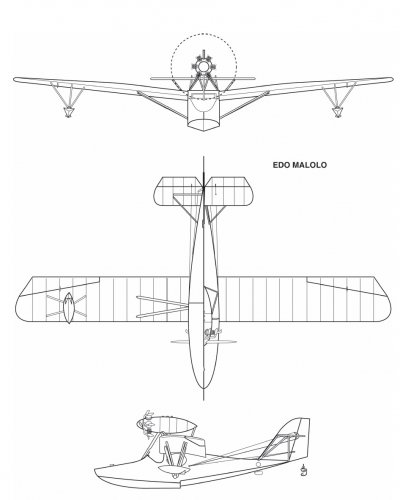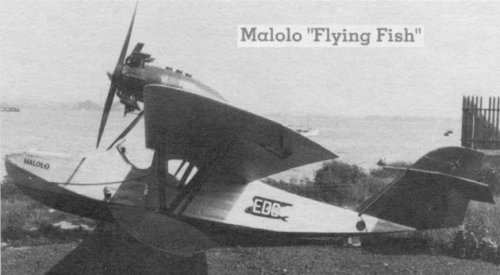The 2 engine Edo "Malolo" is labeled as Edo Model B and the BVKK/EDO Corporation, drawing was dated Dec. 1925. I have not seen the single engine (better known!) Malolo dwg, and can only "assume it was Edo Model "A" with nothing else to go on, here.
I sold the box of BVKK dwgs with lots of hand-drawings on legal paper (those were for both large military planes, and smaller pursuit seaplanes and planes for Aeromarine,) as well as formal crisp original Blueprints from the 1920s.of BOTH EDO and Aeromarine original dwgs, to an avid Edo historian, a Mr. Patterini. At the time, he said, with all his years of research, he had never heard of a two engine Malolo!
Two unfortunate, related stories.
AFTER I had sold the two foot high pile of BVKK's personal archives, I soon AFTER!!!!, found a local shop that could have/would have made full-size clear blueprint copies, for between ONLY $2.50 and $7.50 EACH!, and would have had a set of copies made, had I known.. All these original dwgs and letters had been found in BVKK's long-abandoned cabin, in the remote mountain woods in Vermont, long after he died. I have no idea of how much had already been scavenged and sold elsewhere, before I bought what was left of an ongoing sale, of BVKK's personal archives, on Ebay, years ago.
There was also a number of interesting seaplane and pursuit amphibians from the 1920s, credited to a C. H. Powell in with BVKK's papers, along with numerous leters between them contracting BVKK to work with Powell on an amphibian design with twin floats. and a 1927 BVKK 3-view vblueprint of a twin float amphibian designed by BVKK for Edo. only listed as"experimental."etc . Other blueprints for his interesting version of amphibious landing gear with combined float and wheel and folding landing gear..
The buyer, who had done some admirable work (two articles in Skyways Magazine )on Edo history, had lost much of his sight, by the time he was able to buy these, and has been unable to do further historical research and recording, with them. I do not believe he wishes to correspond with anyone,and cannot use computer, emails or read letters, without difficulty etc.I have phoned him for a few favors from the papers info. He has been kind enough to help, so long as it is something that is very easy for him to handle.
He would be 94 years old in 2015?

